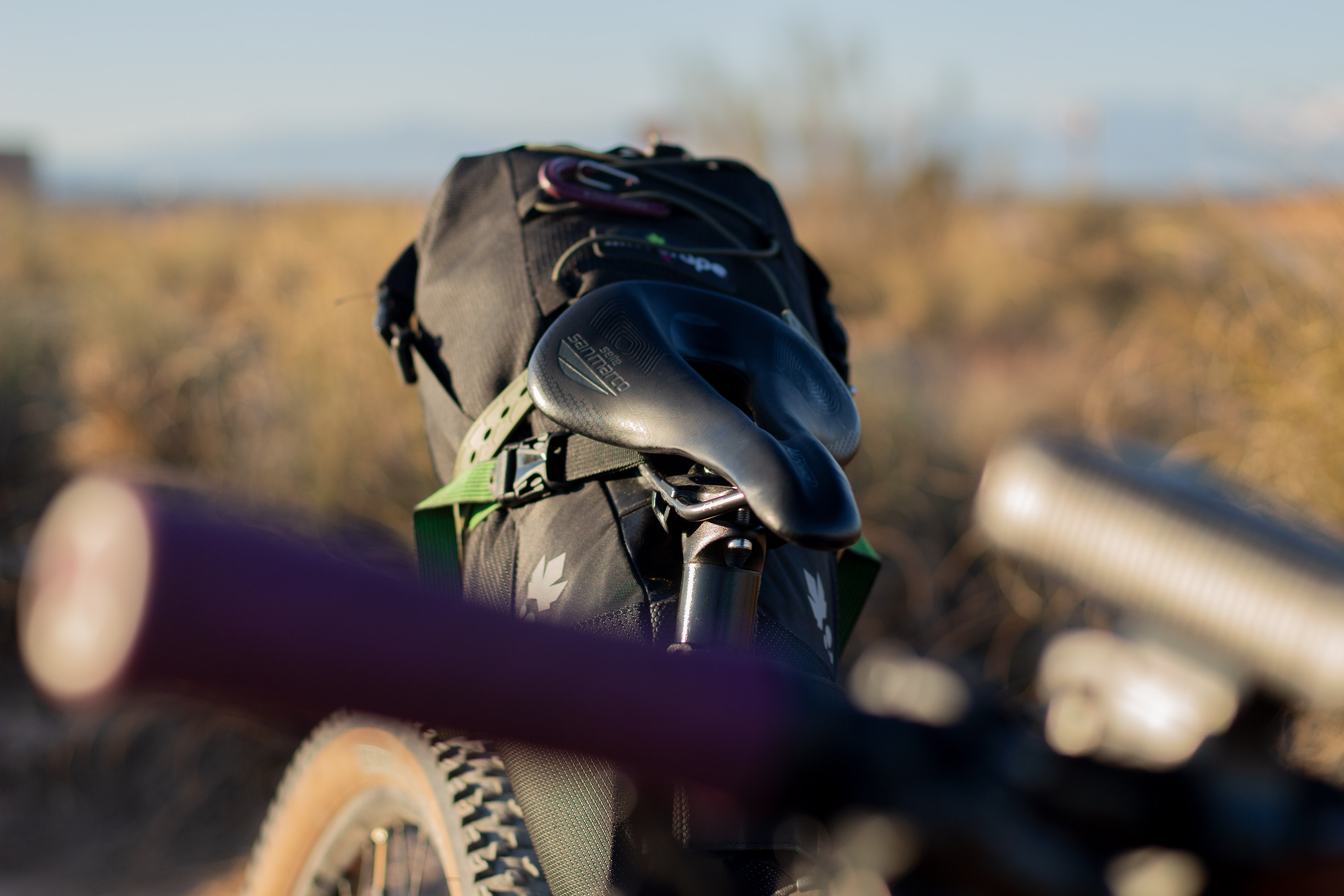The border between West and East, two areas rich in history and traditions and characterised by a wild and untamed nature, were separated by two unique gems: the Tabernas Desert and the Gorafe Desert.
Sandy and arid the former, rocky and monumental the latter – this land was named by the Moors –.
The idea of a bikepacking trip to Andalucía began with this region. From the desire to lose ourselves in the vastness of the desert, in that silence that only two wheels can bring. It all started on a cold evening in late January, at the end of one of those days when the soul is restless and the desire for escape is palpable.
"Giulia, do you want to come to Andalucía?"
I asked her, knowing that she would accept. The twinkle in her eyes when I mentioned the idea of the trip a few days earlier had been unmistakable, but I didn't know she would have made the ticket that very evening.
But Giulia is like that, so naturally enthusiastic.
into the page.
So Andalucía it is!
The weeks before departure were feverish and hectic.
We tried to plan everything down to the last detail, from equipment to overnight stays.
Given the harsh temperatures we would encounter, we opted for an ultra-light bikepacking setup, with stops at hostels and B&Bs, so as not to overload the bikes and to pedal more nimbly.
We studied the route and we decided to set off on mountain bikes rather than gravel bikes, preferring dirt and off-road tracks as much as possible.
We had an idea of the places we would visit but when we landed in Almeria and set off, we realised that nothing would be as we expected.
Civilisation was behind us after only a few kilometres. The asphalt was soon replaced by steep and dusty cart tracks. The settlements thinned out, the climbs became unrideable, and the wind became cold and relentless.
The Sierra Alhamilla embraced us and we rode through its dense and bushy forests for tens of kilometres, until we arrived at the Pico Colativi pass at 1,400m above sea level. We could see the immense Tabernas Desert beneath us.
As the sun began to set, a sudden sandstorm whipped up and the endless descent towards the city left us breathless.
Buzzing with enthusiasm the next morning, we entered the desert. An expanse of gullies, covered with sand, crisscrossed by dry ramblas winding between multi-hued rock walls and disappearing along gradually narrower and more impassable canyons.
As we rode along the dry river beds, the atmosphere became surreal. The silence was deafening. For long stretches we pushed our bikes through the sand. The only company was the hissing of the wind, interrupted by the rustle of hares and birds disturbed by our passage and the hooves of deer climbing along the ridges.
As the only true desert in Europe, this place has a unique charm and it is no coincidence that it has been a favourite set for numerous directors, including Sergio Leone, who have set their western-style stories here.
But if the Tabernas Desert is fascinating, the Gorafe Desert offers landscapes that are so rare to find.
Leaving Tabernas, the landscape changes completely and it is hard to imagine the next stage.
We rode for kilometers, accompanied by the Sierra Nevada dominating the horizon and endless expanses of wind turbines crowding the plateaus crossed.
Flowering olive and almond trees filled up the landscape as far as the eye can see.
The mountain to cross to reach the Sierra de Baza is gentle and sinuous and can be climbed without too much difficulty.
The herds of sheep guarding the pass flee as we cycle by and the shepherds are amazed to see us. We are curious and we don’t know exactly where the Gorafe Desert hides. Until, suddenly, after kilometres of pedalling along a barren plateau, the incredible geological landscapes sculpted by erosion materialised beneath us.
Descending along the gorge carved by the River Gor, which leads to the village embedded in the rock, we are struck by the vast plantations of olive trees scattered among the rocks.
The green of the trees, the glow of their silver foliage, contrasts sharply with the arid gullies that surround them and make this part of the world unique.
This region is a megalithic geopark, in which more than 240 dolmens dating back to the Neolithic period are found.
A series of canyons, ravines and fairy chimneys, sculpted over millions of years by water and wind fill the horizon. It has created a maze of paths to be cycled, but also caused us to constantly stop to take in the views, all while shrouded in silence.
Observing them from above, these Badlands are reminiscent of the Grand Canyon.
The rock formations here are true monumental sculptures, which, depending on the time of day, glow with a thousand shades.
And what better way to enjoy them than over a cup of tea prepared thanks to our little cooker on a chilly late-February sunrise.
The white light that flattens everything before the sun rises, slowly turns pink and then gradually gets stronger until it floods everything, giving the rocks ever more intense hues ranging from purple to fiery red, ochre and orange.
The Arabs who ruled these lands for centuries lived in cuevas, houses carved directly into the mountain, and to this day in the village of Gorafe it is still possible to visit some of them and spend the night inside.
Getting lost in these places was incredible. The days felt longer, as if time stood still. Nature captivated us with its majesty and power, recharged and regenerated us. Now we let the next dream begin.
























